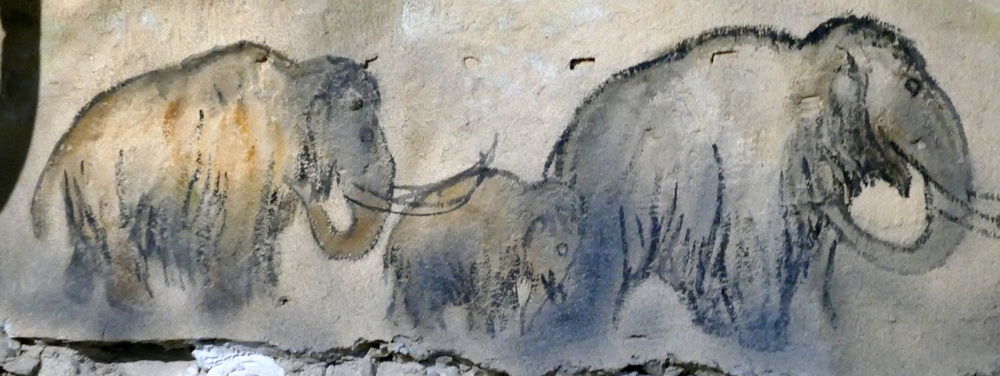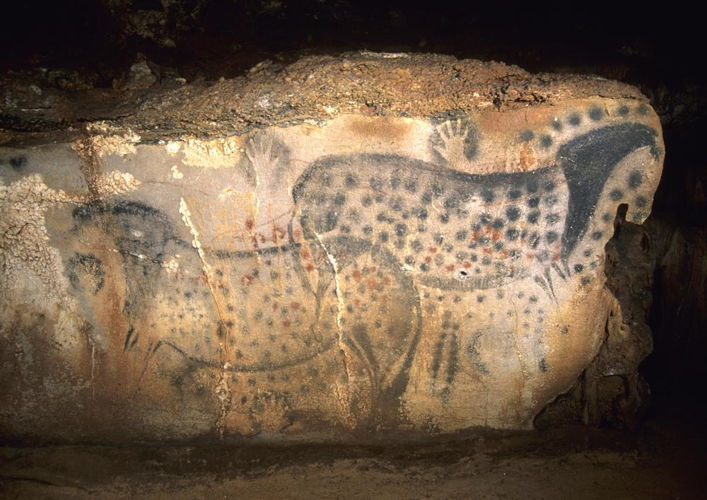Homo Sapiens, the first artists
30 November 2022

At some point, many millennia ago, man - in this case Homo Sapiens - found themselves comfortable enough in their hunter-gatherer existence to bring art into their mental and physical existence. This prehistoric art is classified into three main categories:
- parietal art, which refers to any prehistoric art found on cave walls. It encompasses all types of cave painting, all forms of engraved rock art, or other petroglyphs (rock carvings), as well as any relief sculpture carved on walls, floors or ceilings.
- rock art, which refers to all works of art made on rocks, most often outdoors.
- portable art, which refers to all objects bearing an ornament, whether utilitarian or purely decorative.
Some of these fascinating paintings date back 40,000 years and reveal the incredible diversity of prehistoric world fauna: aurochs, mammoths, bears, horses, antelopes, rhinos and more. Prehistoric art is a powerful reminder of the relationship between man and nature, the respect man had for the animals they painted and of a link that, in many respects, is diminished or lost.
We invite you to explore the diversity of parietal and rock art throughout the world in this series of photographs of different sites, classified by continents and by country, in alphabetical order.
Africa, North and South America, Asia and Australia

Africa has many sites of parietal and rock art. Tassili-N'Ajjer in Algeria; Tadrart Acacus in Libya; Damaraland in Namibia and Ennedi in Chad show a great variety of styles of paintings and engravings. They give insights into the existing or imagined fauna at the time of their artistic creation.
On the other side of the globe, the archaic anthropomorphic pictographs in the Sego Canyon in Utah in the United States impress with their likeness to extra-terrestrials without eyes or arms, but equipped with some kind of antennae.
The comparison between a human figure in the Cave of the Hands in Patagonia, Argentina, and the Huashan cliff paintings in Guangxi Province, China is confounding: at an enormous physical and temporal distance, these anthropomorphic representations look similar.
On the other side, in Australia, two examples of Aboriginal cave paintings found in the same place, in Kakadu National Park in Arnhem Land in the Northern Territory, highlight very particular and distinct artistic styles.
Europe: Spain, France and Italy

Starting with Altamira, Altxerri, Ekain, La Pileta, Santimamiñe and Tito Bustillo in Spain; followed by Chauvet, Lascaux, Niaux and Pech Merle in France; and Addaura and Valcamonica in Italy, the abundance of parietal and rock art and the diversity of forms in these three countries are astonishing.
This small series of illustrations and photos explain the creation of the Lascaux cave paintings by prehistoric artists as well as the recreation of the paintings in copy in the Lascaux II cave.
Portable art
The term portable art means objects that can be transported or carried around. The function of those labelled "symbolic" - statuettes, plaques, engraved pebbles - remains largely unknown. "Utility" objects are weapons or tools: harpoons, smoothers, spatulas, etc.
The scientific study of these objects provides much information about daily life in the time of homo sapiens and illustrates his technical aptitude as well as his consideration to the aesthetic of portable art.
Some examples shown here are the limestone plaque from the site of La Marche, in Lussac-les-Châteaux in Vienne with its profile engraved with a human face with an animal muzzle and the Venus of Lespugue. To celebrate its discovery in 1922, the Venus de Lespugue was subjected to a detailed study and a minimal restoration, it is presented at the Musée de l'Homme surrounded by a dozen other iconic female representations of prehistory. We show here other Venuses of the Gravettian style such as that of Tursac, Monpazier and Sireuil; the Venus of Savignano; the Venus of Willendorf and two pendants in female forms from Dolní Vestonice.
This gallery of portable art closes with a bison licking its side, sculpted in reindeer antler; a deer engraved on a bone; bone harpoons for fishing and a perforated rod called "imps".
Click here see the complete selection of 400 photos, presented by country and sites in alphabetical order.
Concept and image choice : Ulrike Haussen
Translated by Mellissa Scamporlino



































